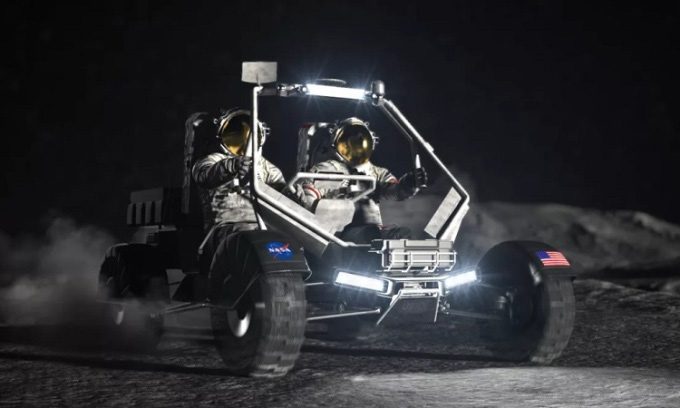Lunar Terrain Vehicle (LTV) that NASA is planning to create will transport two astronauts and operate semi-autonomously to conduct experiments.
NASA is calling on private companies to submit proposals for LTV designs for future Artemis missions to the Moon, with a deadline of July 10, according to Space. The agency has provided a list of design requirements that potential manufacturers must meet. The manufacturer will need to provide a complete service package, from development to delivering the vehicle to the lunar surface and handling operations.

Rendering of the new lunar terrain vehicle. (Image: NASA).
According to NASA, the LTV needs to have autonomous functionalities and be equipped with scientific instruments, a robotic arm, and exploration tools to continue research during downtime between crewed missions in the Artemis program. This program aims to return astronauts to the Moon’s surface for the first time in over 50 years.
- Artemis 1 launched the uncrewed Orion spacecraft into lunar orbit in November 2022.
- Artemis 2 plans a similar flight with astronauts aboard in 2024.
- Artemis 3 will mark the first landing on the Moon in this program, expected to launch in late 2025.
- Astronaut transport using the LTV will begin after Artemis 5 in 2029.
With the LTV, NASA hopes to search for resources on the Moon more efficiently. NASA’s crewed Artemis missions target the Moon’s South Pole due to its abundant resources, including significant amounts of water ice that can be used to produce essential supplies ranging from drinking water to rocket fuel.
Utilizing local resources to supplement supplies during interplanetary missions (ISRU) is a key component of long-duration space missions. To survive in the harsh environment of the lunar South Pole, the LTV needs to operate and navigate effectively under diverse conditions and extreme temperature fluctuations while maintaining power during extended periods of darkness when solar panels cannot be used. The LTV will survey areas rich in potential resources and suggest locations for future lunar bases.
NASA will announce the selected manufacturer for the design and construction of the LTV in November 2023.
- Large organism the size of 200 km² holds the ‘cure’ for climate change that many countries dream of
- Why are male mammals larger than females in most species, while insects are the opposite?
- Stiff as wood, processed for half a year, yet this material priced over 1 million VND/kg still attracts customers





















































